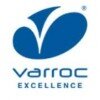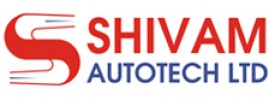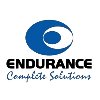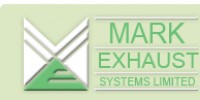
i
Kinetic
Engineering
Filter interviews by
Kinetic Engineering Production Engineer Interview Questions and Answers
27 Interview questions
Turning tools are cutting tools used in lathe machines to remove material from a workpiece.
Turning tools come in various shapes and sizes depending on the application.
The most common types of turning tools are roughing tools, finishing tools, and threading tools.
The specifications of a turning tool include its material, shape, size, and cutting edge angle.
The material used for turning tools can be high-speed steel...
I have used carbide inserts and ceramic inserts in my previous projects.
Carbide inserts are commonly used for machining steel and other metals.
Ceramic inserts are used for high-speed machining of cast iron and other hard materials.
I have also used diamond inserts for machining non-ferrous materials like aluminum.
The choice of insert depends on the material being machined and the desired surface finish.
M code is a programming language used in CNC machines to control various functions such as spindle speed, tool changes, and coolant.
M codes are used to initiate specific actions or functions on a CNC machine.
M codes are typically followed by a numerical value that specifies the desired action.
Examples of M codes include M03 for spindle on clockwise, M05 for spindle stop, and M08 for coolant on.
M codes can be custo...
G code is a programming language used in CNC machines to control their movements and operations.
G code is a standardized language used in manufacturing to control CNC machines.
It consists of a series of commands that tell the machine what to do, such as move the tool to a specific location or change the speed of the spindle.
G code is used to create complex parts with high precision and accuracy.
Examples of G code ...
I measure safety, quality, productivity, efficiency, and cost-effectiveness.
Safety of workers and equipment
Quality of products
Productivity of the production line
Efficiency of processes
Cost-effectiveness of operations
Reading a drawing requires understanding of symbols, dimensions, and scale.
Identify the title block for important information
Understand the scale and units of measurement
Read the dimensions and tolerances
Identify symbols and annotations
Understand the drawing's purpose and context
The projection angle used in drawing depends on the type of drawing and the purpose of the drawing.
Orthographic projection is commonly used in engineering drawings
Isometric projection is used to show three-dimensional objects
Perspective projection is used in architectural and artistic drawings
The choice of projection angle depends on the object being drawn and the information that needs to be conveyed
Grinding is a material removal process using an abrasive wheel, while turning is a machining process using a cutting tool to remove material from a rotating workpiece.
Grinding is typically used for finishing operations, while turning is used for roughing and finishing
Grinding produces a smoother surface finish than turning
Turning is typically faster than grinding
Grinding is used for materials that are too hard for...
The minimum value measured by a height gauge is the smallest distance that can be accurately measured by the instrument.
The minimum value is determined by the resolution of the gauge
For example, a gauge with a resolution of 0.01mm can measure a minimum value of 0.01mm
The minimum value can also be affected by the accuracy of the gauge
It is important to calibrate the gauge regularly to ensure accurate measurements
CNMG120408 is an indexable insert used in metal cutting operations.
CNMG: ISO code for diamond-shaped inserts with 80-degree corners
12: Insert thickness in millimeters
04: Corner radius in millimeters
08: Insert length in millimeters
Kinetic Engineering Production Engineer Interview Experiences
2 interviews found
I applied via Naukri.com and was interviewed in Mar 2024. There was 1 interview round.
(2 Questions)
- Q1. 1. M/c stop 2. TPM 3. 5s 4. Kaizen
- Q2. 1. Production productivity 2.manpower hadleling 3. Planing 4. Tool setting
I applied via Naukri.com and was interviewed in Dec 2021. There were 2 interview rounds.
(29 Questions)
- Q1. Minimum value measure by vernier caliper?
- Ans.
The minimum value that can be measured by a vernier caliper depends on the resolution of the caliper.
The resolution of a vernier caliper is typically 0.02 mm or 0.001 inch.
Therefore, the minimum value that can be measured is usually the resolution of the caliper.
For example, if the resolution is 0.02 mm, the minimum value that can be measured is 0.02 mm.
- Q2. Minimum value measure by screw gauge?
- Ans.
The minimum value measure by screw gauge is the smallest distance that can be measured by the instrument.
The minimum value measure is determined by the pitch of the screw and the number of divisions on the thimble.
For example, if the pitch is 0.5 mm and there are 50 divisions on the thimble, the minimum value measure would be 0.01 mm.
The screw gauge is commonly used in manufacturing and engineering to measure small dis...
- Q3. Which types Equipment used?
- Ans.
Various types of equipment are used in production engineering.
Machining equipment such as lathes, milling machines, and drill presses
Welding equipment including MIG, TIG, and stick welders
Cutting equipment such as plasma cutters and waterjets
Material handling equipment like cranes and forklifts
Testing equipment such as gauges, micrometers, and CMMs
- Q4. Minimum value measure by height gauge?
- Ans.
The minimum value measured by a height gauge is the smallest distance that can be accurately measured by the instrument.
The minimum value is determined by the resolution of the gauge
For example, a gauge with a resolution of 0.01mm can measure a minimum value of 0.01mm
The minimum value can also be affected by the accuracy of the gauge
It is important to calibrate the gauge regularly to ensure accurate measurements
- Q5. What is gears and cutting process?
- Ans.
Gears are mechanical components that transmit power and motion between rotating shafts. Cutting process is a manufacturing process used to shape materials by removing unwanted material.
Gears are used to transmit power and motion between rotating shafts
They come in different shapes and sizes, such as spur, helical, bevel, and worm gears
Cutting process involves removing unwanted material from a workpiece to shape it into...
- Q6. Which types product manufactured by you?
- Ans.
We manufacture a variety of products including consumer electronics, automotive parts, and medical devices.
Consumer electronics such as smartphones and laptops
Automotive parts like engine components and brake systems
Medical devices including surgical instruments and diagnostic equipment
- Q7. Which types machine you used?
- Ans.
I have experience working with various types of machines including CNC machines, lathes, milling machines, and grinders.
CNC machines
Lathes
Milling machines
Grinders
- Q8. What is grinding and why this process require?
- Q9. Difference between grinding and turning?
- Ans.
Grinding is a material removal process using an abrasive wheel, while turning is a machining process using a cutting tool to remove material from a rotating workpiece.
Grinding is typically used for finishing operations, while turning is used for roughing and finishing
Grinding produces a smoother surface finish than turning
Turning is typically faster than grinding
Grinding is used for materials that are too hard for turn...
- Q10. A product which full measurements measure by you?
- Ans.
As a production engineer, I have measured the full dimensions of a car engine.
I have measured the length, width, and height of the engine block.
I have also measured the diameter and length of the pistons.
Additionally, I have measured the thickness and width of the cylinder walls.
All of these measurements are important for ensuring the engine is manufactured to the correct specifications.
- Q11. How to solve the problem in robot means how to detect fault?
- Ans.
To solve problems in robots and detect faults, various techniques can be used such as sensor monitoring, data analysis, and predictive maintenance.
Implement sensor monitoring to detect abnormal behavior or deviations in robot performance.
Collect and analyze data from sensors to identify patterns or anomalies that indicate faults.
Utilize predictive maintenance techniques to anticipate and prevent potential failures.
Impl...
- Q12. Whats is control plan?
- Ans.
Control plan is a document that outlines the steps to be taken to ensure quality control in a manufacturing process.
It is a written document that outlines the steps to be taken to ensure quality control in a manufacturing process
It includes details on the process, the measurements to be taken, and the frequency of those measurements
It is used to ensure that the manufacturing process is consistent and that the final pro...
- Q13. Which projection angle used in drawing
- Ans.
The projection angle used in drawing depends on the type of drawing and the purpose of the drawing.
Orthographic projection is commonly used in engineering drawings
Isometric projection is used to show three-dimensional objects
Perspective projection is used in architectural and artistic drawings
The choice of projection angle depends on the object being drawn and the information that needs to be conveyed
- Q14. How to read any drawing
- Ans.
Reading a drawing requires understanding of symbols, dimensions, and scale.
Identify the title block for important information
Understand the scale and units of measurement
Read the dimensions and tolerances
Identify symbols and annotations
Understand the drawing's purpose and context
- Q15. Difference between mass production and batch production?
- Q16. What is 5 s and why required in industry?
- Q17. Tell me 5 value which measure by you at last time?
- Ans.
I measure safety, quality, productivity, efficiency, and cost-effectiveness.
Safety of workers and equipment
Quality of products
Productivity of the production line
Efficiency of processes
Cost-effectiveness of operations
- Q18. Which type of production in your current company ?
- Q19. What is team leadership?
- Ans.
Team leadership involves guiding and motivating a group to achieve common goals while fostering collaboration and communication.
Vision and Direction: A team leader sets a clear vision and direction for the team, ensuring everyone understands the goals. For example, a production engineer might outline the objectives for a new manufacturing process.
Motivation and Support: Effective leaders motivate their team members by ...
- Q20. What is G code and use?
- Ans.
G code is a programming language used in CNC machines to control their movements and operations.
G code is a standardized language used in manufacturing to control CNC machines.
It consists of a series of commands that tell the machine what to do, such as move the tool to a specific location or change the speed of the spindle.
G code is used to create complex parts with high precision and accuracy.
Examples of G code comma...
- Q21. What is M code and use
- Ans.
M code is a programming language used in CNC machines to control various functions such as spindle speed, tool changes, and coolant.
M codes are used to initiate specific actions or functions on a CNC machine.
M codes are typically followed by a numerical value that specifies the desired action.
Examples of M codes include M03 for spindle on clockwise, M05 for spindle stop, and M08 for coolant on.
M codes can be customized...
- Q22. Tell me about G40, G28, G99 and G90?
- Ans.
G40, G28, G99, and G90 are G-codes used in CNC machining.
G40 is used to cancel the cutter compensation.
G28 is used to return the machine to the reference point.
G99 is used to set the feed rate to units per minute.
G90 is used to set the machine to absolute positioning mode.
- Q23. Defference between G76 and G92?
- Ans.
G76 and G92 are both G-codes used in CNC machining, but they have different functions.
G76 is used for thread cutting, while G92 is used for setting the work offset.
G76 specifies the thread pitch, depth, and other parameters, while G92 sets the position of the workpiece in relation to the tool.
G76 is used with a threading tool, while G92 is used with a work offset probe or sensor.
G76 is used to create external or intern...
- Q24. What is M00, M30, M08 and M01?
- Ans.
M-codes are machine codes used to control CNC machines. M00 is program stop, M30 is program end, M08 is coolant on, and M01 is optional stop.
M-codes are used to control CNC machines
M00 is used to stop the program
M30 is used to end the program
M08 is used to turn on the coolant
M01 is used to create an optional stop
- Q25. Which types of insert used by you ?
- Ans.
I have used carbide inserts and ceramic inserts in my previous projects.
Carbide inserts are commonly used for machining steel and other metals.
Ceramic inserts are used for high-speed machining of cast iron and other hard materials.
I have also used diamond inserts for machining non-ferrous materials like aluminum.
The choice of insert depends on the material being machined and the desired surface finish.
- Q26. Define every character of CNMG120408?
- Ans.
CNMG120408 is an indexable insert used in metal cutting operations.
CNMG: ISO code for diamond-shaped inserts with 80-degree corners
12: Insert thickness in millimeters
04: Corner radius in millimeters
08: Insert length in millimeters
- Q27. What's the specifications of turning tool?
- Ans.
Turning tools are cutting tools used in lathe machines to remove material from a workpiece.
Turning tools come in various shapes and sizes depending on the application.
The most common types of turning tools are roughing tools, finishing tools, and threading tools.
The specifications of a turning tool include its material, shape, size, and cutting edge angle.
The material used for turning tools can be high-speed steel, car...
- Q28. Make a Program from drawing?
- Ans.
To make a program from a drawing, first analyze the drawing and break it down into smaller components.
Identify the shapes and lines in the drawing
Determine the dimensions and scale of the drawing
Create a list of materials and tools needed
Use a CAD software to create a digital model of the drawing
Test the program to ensure it works as intended
- Q29. Leastcount of boregauge?
- Ans.
The least count of a bore gauge is the smallest measurement that can be read on the gauge.
Least count is determined by the number of divisions on the gauge scale and the distance between them.
For example, a bore gauge with 50 divisions on the scale and a distance of 0.01mm between each division has a least count of 0.0002mm.
Least count is important for accurate measurement and should be considered when selecting a gaug...
(11 Questions)
- Q1. What are your strengths and weaknesses?
- Q2. What are your salary expectations?
- Ans.
Salary expectations should reflect your skills, experience, and industry standards, ensuring alignment with the company's budget.
Research Industry Standards: Look up salary ranges for Production Engineers in your region to provide a well-informed expectation.
Consider Your Experience: If you have specialized skills or certifications, mention how they justify a higher salary within the range.
Discuss Job Responsibilities:...
- Q3. What is your family background?
- Ans.
I come from a close-knit family that values education, hard work, and support for one another in all endeavors.
Supportive Parents: My parents have always encouraged my academic pursuits, providing guidance and resources for my education.
Siblings: I have two siblings who are also pursuing careers in engineering, fostering a competitive yet supportive environment.
Family Traditions: We have a tradition of family gathering...
- Q4. Share details of your previous job.
- Q5. Why are you looking for a change?
- Ans.
I am seeking a change to grow professionally, explore new challenges, and contribute to innovative projects in production engineering.
Career Growth: I feel that I have reached a plateau in my current role and am eager to take on more responsibilities and challenges.
Skill Development: I want to expand my skill set by working with new technologies and methodologies that are not available in my current position.
Cultural F...
- Q6. Where do you see yourself in 5 years?
- Ans.
In five years, I envision myself as a senior production engineer, leading projects and driving innovations in manufacturing processes.
Leadership Role: I aim to take on a leadership position where I can mentor junior engineers and lead cross-functional teams on major projects.
Process Improvement: I plan to implement lean manufacturing techniques to enhance efficiency and reduce waste, similar to successful projects I've...
- Q7. Tell me about yourself.
- Q8. Why are you not start your career as RJ?
- Q9. Why you want a permanent job?
- Q10. Are You work as a quality Engineer in my company?
- Ans.
I am open to working as a quality engineer, leveraging my skills to enhance product quality and ensure compliance with standards.
Quality engineering is crucial for maintaining high standards in production.
I have experience in quality control processes, such as Six Sigma.
I can contribute to reducing defects and improving overall efficiency.
My background in production engineering provides a solid foundation for quality a...
- Q11. Which type environment you want ?
- Ans.
I prefer a dynamic and challenging environment that encourages innovation and continuous improvement.
Dynamic and fast-paced work environment
Opportunities for learning and growth
Collaborative and supportive team culture
Clear communication and feedback channels
Access to modern technology and tools
Challenging projects that require problem-solving skills
Interview Preparation Tips
- CNC Programming
- Production equipment
- Quality Control
- Machining
- Metal properties
Alway focus and eye contact with interviewer.
Hide your bad habits.
Listen carefully every question.
Maintain your dressup scene.
Use body language.
Skills evaluated in this interview
Top trending discussions






Interview questions from similar companies

I applied via Walk-in and was interviewed before Sep 2020. There was 1 interview round.
Interview Questionnaire
8 Questions
- Q1. Tell me about yourself.
- Ans.
I am a production engineer with experience in optimizing manufacturing processes and ensuring efficient production.
Experienced production engineer
Skilled in optimizing manufacturing processes
Ensuring efficient production
Strong knowledge of production equipment and technologies
Proficient in analyzing data and implementing improvements
Collaborative team player
- Q2. What is your position in previous company ?
- Ans.
I was a Senior Production Engineer in my previous company.
I held the position of Senior Production Engineer.
I was responsible for overseeing production processes and ensuring efficiency.
I worked closely with the production team to identify and resolve any issues.
I implemented improvements to optimize production output and reduce costs.
I collaborated with other departments to coordinate production schedules and meet dea...
- Q3. What is your role in it ?
- Ans.
As a Production Engineer, my role is to oversee the manufacturing process, optimize production efficiency, and ensure quality control.
Overseeing the manufacturing process
Optimizing production efficiency
Ensuring quality control
Identifying and resolving production issues
Implementing process improvements
Collaborating with cross-functional teams
Monitoring production metrics and analyzing data
Creating and maintaining produc...
- Q4. As a Jr. Quality Engineer. I have checked raw materials inspection, Dimensional inspection of job with respect to revised drawings, Leak test of job, Blasting & painting , And quality related issues with t...
- Q5. What is the full form of DFT in painting ?
- Q6. Dry Film Thickness.
- Ans.
Dry film thickness refers to the thickness of a coating after it has dried and cured.
It is measured using a coating thickness gauge.
It is important to ensure that the dry film thickness meets the specifications for the coating.
The dry film thickness can affect the performance and durability of the coating.
Examples of coatings that require specific dry film thickness include paint, powder coating, and plating.
Dry film t...
- Q7. What if the DFT is more than requirement ?
- Ans.
Excess DFT can lead to increased cost and longer production time.
Excess DFT can lead to increased material usage and waste.
It can also lead to longer production time and increased cost.
The excess DFT may also affect the performance and durability of the product.
It is important to ensure that the DFT is within the specified range to avoid these issues.
- Q8. There is a peel off and rundown in the job as DFT is more than requirement.
Interview Preparation Tips

Interview Questionnaire
1 Question
- Q1. Forging production
Interview Preparation Tips

I applied via Recruitment Consulltant and was interviewed in Jun 2023. There were 4 interview rounds.

(1 Question)
- Q1. Introduction, personality and attitude observing,family backgrounds
(1 Question)
- Q1. All question from department head regarding your departmental actvities
Last round with President about your technical knowledgeable
Interview Preparation Tips

I applied via Campus Placement and was interviewed before Mar 2023. There were 2 interview rounds.
Questions related to heat treatment
(2 Questions)
- Q1. Introduction and metallurgy general questions
- Q2. Introduction and metallurgy questions

I applied via Naukri.com and was interviewed before May 2023. There were 2 interview rounds.
(1 Question)
- Q1. Gear manufacturing process
(1 Question)
- Q1. Family Background

Production Engineer Interview Questions & Answers
Shivam Autotechposted on 16 Jan 2025
I applied via LinkedIn and was interviewed in Dec 2024. There was 1 interview round.
(2 Questions)
- Q1. CNC machine nomniculture
- Q2. Parts defects
Interview Preparation Tips

Production Engineer Interview Questions & Answers
Suprajit Engineeringposted on 1 Jul 2021
Interview Questionnaire
4 Questions
- Q1. What is oee.
- Ans.
OEE stands for Overall Equipment Efficiency. It is a measure of how effectively a manufacturing operation is utilized.
OEE is calculated by multiplying Availability, Performance, and Quality.
Availability measures the percentage of time that equipment is available for production.
Performance measures the speed at which the equipment operates compared to its designed speed.
Quality measures the percentage of good-quality pr...
- Q2. What is production planning in shopfloar.
- Ans.
Production planning in shopfloor involves creating a detailed plan for manufacturing processes to ensure efficient and timely production.
Production planning involves determining the sequence of operations, resources required, and estimated time for each task.
It includes creating a production schedule, allocating resources, and coordinating with different departments.
The goal is to optimize production, minimize downtime...
- Q3. What is productivity.
- Ans.
Productivity is the measure of efficiency and output in relation to the resources used.
Productivity is a measure of how efficiently resources are used to produce goods or services.
It is the ratio of output to input, indicating how much is produced per unit of input.
Higher productivity means achieving more output with the same or fewer resources.
For example, in manufacturing, productivity can be measured by the number o...
- Q4. What is 5s.
- Ans.
5S is a methodology used to organize and maintain a clean, efficient, and safe work environment.
5S stands for Sort, Set in Order, Shine, Standardize, and Sustain.
Sort involves removing unnecessary items from the workplace.
Set in Order focuses on arranging necessary items in a logical and efficient manner.
Shine involves cleaning and maintaining the workplace.
Standardize establishes guidelines and procedures for maintain...

Production Engineer Interview Questions & Answers
Suprajit Engineeringposted on 31 Aug 2022
I applied via Naukri.com and was interviewed in Jul 2022. There were 3 interview rounds.

(1 Question)
- Q1. Personal information
(2 Questions)
- Q1. Job responsibilities
- Q2. Asking about previous company and skills, job responsibility
- Ans. Not give negative response of previous company
Interview Preparation Tips
Kinetic Engineering Interview FAQs
Tell us how to improve this page.
Kinetic Engineering Interviews By Designations
- Kinetic Engineering Maintenance Engineer Interview Questions
- Kinetic Engineering Production Engineer Interview Questions
- Kinetic Engineering Senior Engineer- Maintenance Interview Questions
- Kinetic Engineering Engineer Interview Questions
- Kinetic Engineering Accountant Interview Questions
- Kinetic Engineering Senior Engineer Interview Questions
- Kinetic Engineering Quality Inspection Engineer Interview Questions
- Kinetic Engineering Safety Officer Interview Questions
- Show more
Interview Questions for Popular Designations
- Senior Engineer Interview Questions
- Project Engineer Interview Questions
- Junior Engineer Interview Questions
- Production Manager Interview Questions
- Production Officer Interview Questions
- Graduate Engineer Interview Questions
- Executive Engineer Interview Questions
- Senior Production Engineer Interview Questions
- Show more
Overall Interview Experience Rating
based on 1 interview experience
Difficulty level
Duration
Production Engineer Interview Questions from Similar Companies
Kinetic Engineering Production Engineer Reviews and Ratings
based on 12 reviews
Rating in categories
|
Quality Engineer
52
salaries
| ₹1.7 L/yr - ₹4 L/yr |
|
Engineer
38
salaries
| ₹2.2 L/yr - ₹4.5 L/yr |
|
Senior Engineer
34
salaries
| ₹2.8 L/yr - ₹5 L/yr |
|
Maintenance Engineer
27
salaries
| ₹1.8 L/yr - ₹4.5 L/yr |
|
Production Engineer
24
salaries
| ₹1.6 L/yr - ₹4.6 L/yr |

JBM Group

Subros

Varroc Group

Endurance Technologies
- Home >
- Interviews >
- Kinetic Engineering Interview Questions











